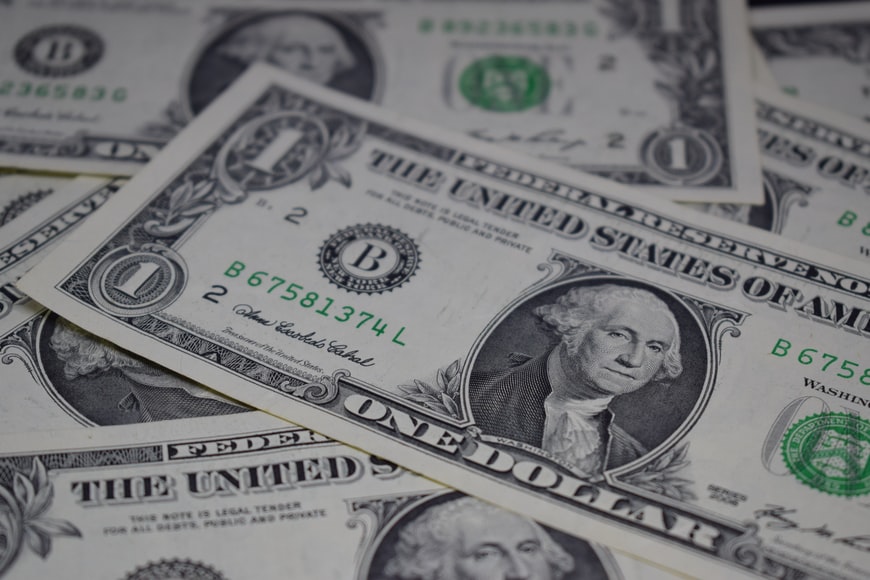There is a positive bias to global risk appetite this Tuesday, with US equities mostly higher in pre-market trade as they build on the gains posted during yesterday’s Wall Street session. At present, S&P 500 futures are probing the 4500 level, the final technical barrier to a test of the record highs at just above 4550. European equities are a little more subdued with the bulk of the gains coming for global tech stocks, which have a lower weighting in Europe than the US, but the Stoxx 600 is nonetheless in the green and trading about 0.2% higher on the session. European and US equities were supported by a strong Asia Pacific session. Global equities have this weak shrugged off weak economic data out of both of the US (Industrial Production unexpectedly shrunk in September as the chip shortage hit auto manufacturing) and China (Q3 GDP and September Industrial Production data on Monday was worse than expected), as well as some big moves in short end yields in countries like the UK and New Zealand as more aggressive rate hiking cycles are priced in. Moreover, with commodity prices still pushing to fresh highs (WTI looks like it wants to test $84.00 per barrel and the BBG Industrial Metal Subindex is still at record levels around 185), inflation risks continue to look pointed to the upside. Rather than focusing on this wall of macro worries, equity investors have switched their focus to the micro, i.e. to corporate earnings. Indeed, the US earnings season has thus far been better than analysts had been forecasting and this has helped ease familiar fears that equity valuations are excessive. If US and European equities are to continue higher in the coming weeks, it is likely going to need to be driven by either continued strong earnings (likely) or a substantial easing of global inflationary pressures and hawkish central bank pricing (very unlikely, given shortages/supply chain disruptions driving these inflationary pressures will take time to remedy).
Turning now to take a look at bond markets; US 2-year yields have continued to pull back from Monday’s highs and are currently just under the 0.40% mark, having at one point yesterday nearly hit 0.45%. That coincides with a modest easing of Fed rate hike bets; the money market implied probability of at least one 25bps rate hike by the September 2022 meeting is at 73.5% from 76.7% yesterday. But that probability compares to markets pricing just under a 30% chance of a 25bps rate hike by September 2022 as recently as one month ago, so pricing is still hawkish, justifying 2-year yields remaining at elevated levels. 10-year US yields, meanwhile, continue to consolidate close to the 1.60% mark, within the ranges of the last week or so. Yields in non-US markets have been getting more attention in recent days, with short end yields in the UK and New Zealand spiking, both triggered by hawkish repricing of rate hike expectations, the former driven by hawkish remarks from BoE Governor Bailey over the weekend who alluded to imminent rate hikes to ensure inflation expectations don’t de-anchor, and the latter driven by a much sharper than expected spike in New Zealand Q3 CPI. On that, BoE Monetary Policy Committee members Pill and Mann will both be speaking today, and given prior hawkish leaning remarks, are unlikely to push back against hawkish expectations (markets now see the BoE hiking rates in both November and December). Bailey is also set to speak in the early afternoon, which may offer him a chance to recalibrate market expectations if he deems them of having become too hawkish, though he may not speak on policy, given the speech is mostly related to climate risks.
There has also been a lot of attention on bond and money markets testing the guidance of some of the more dovish central banks. Despite the ECB’s recently announced symmetric 2.0% inflation target that raises the bar for rate hikes, money markets are now pricing in modest rate hikes from the ECB as soon as the end of 2022. This is lifting European yields, though it seems a little excessive given the ongoing resolutely dovish stance of core ECB members like President Lagarde and Chief Economist Lane, which seems unlikely to buckle any time soon, despite rising inflationary pressures in the Eurozone. Similarly, money markets are also pricing in rate hikes in Australia as soon as next year, despite official RBA guidance that there will be no hikes until 2024 given that inflationary pressures there are lower and wage growth will likely need to pick up to around 4.0% to drive inflation back to target, which likely won’t happen until 2024. This dovish stance was on show in the minutes of the last RBA meeting which were released last night. Again, money markets may be getting a little ahead of themselves with regards to betting on RBA tightening too.
Looking at how FX markets are performing this morning; amid the broadly risk on market tone, the dollar and yen are the worst two performers, with the DXY slipped back towards 93.50 to print fresh monthly lows, and USDJPY dropping back towards 114.00, though still very close to multi-year highs. Some cited concerns about Fed Chair Jerome Powell’s renomination as Chairman of the Fed as a cause of USD weakness; a story was doing the rounds yesterday suggesting he was active trading in stock markets last year. The kiwi is the best performing G10 currency, up nearly 1.0% on the session, which has seen NZDUSD surge to 0.7150 from under 0.7100, despite a rise in domestic Covid-19 cases. That could be a reflection of the market’s approval of the government in NZ dropping its zero Covid-19 stance; despite the continued rise in cases, PM Ardern has nonetheless signalled the country will be open for Christmas. AUD, GBP and NOK aren’t too far behind the kiwi, up 0.8%, 0.8% and 0.7% respectively, with AUDUSD moving above 0.7450 overnight and hitting fresh multi-month highs, while GBPUSD surged above 1.3800 for the first time in over a month. Finally in the G10, CHF, EUR and CAD are all sharing the spoils of dollar weakness, up between 0.2-0.4% on the session versus the buck. Yesterday’s quarterly Business Outlook Survey released by the BoC was optimistic in tone and framed by analysts as having hawkish implications for BoC policy expectations. At the very least, most still expect the bank to end QE purchases at the end of this year as planned and to start hiking rates at some point around the middle of next year.
In terms of the rest of the session; as noted, BoE speak will be worth monitoring for more hawkish undertones, while we will also have a few ECB and FOMC speakers. US September housing data (Building Permits and Housing Starts) will also be released but is likely to be ignored by markets.




